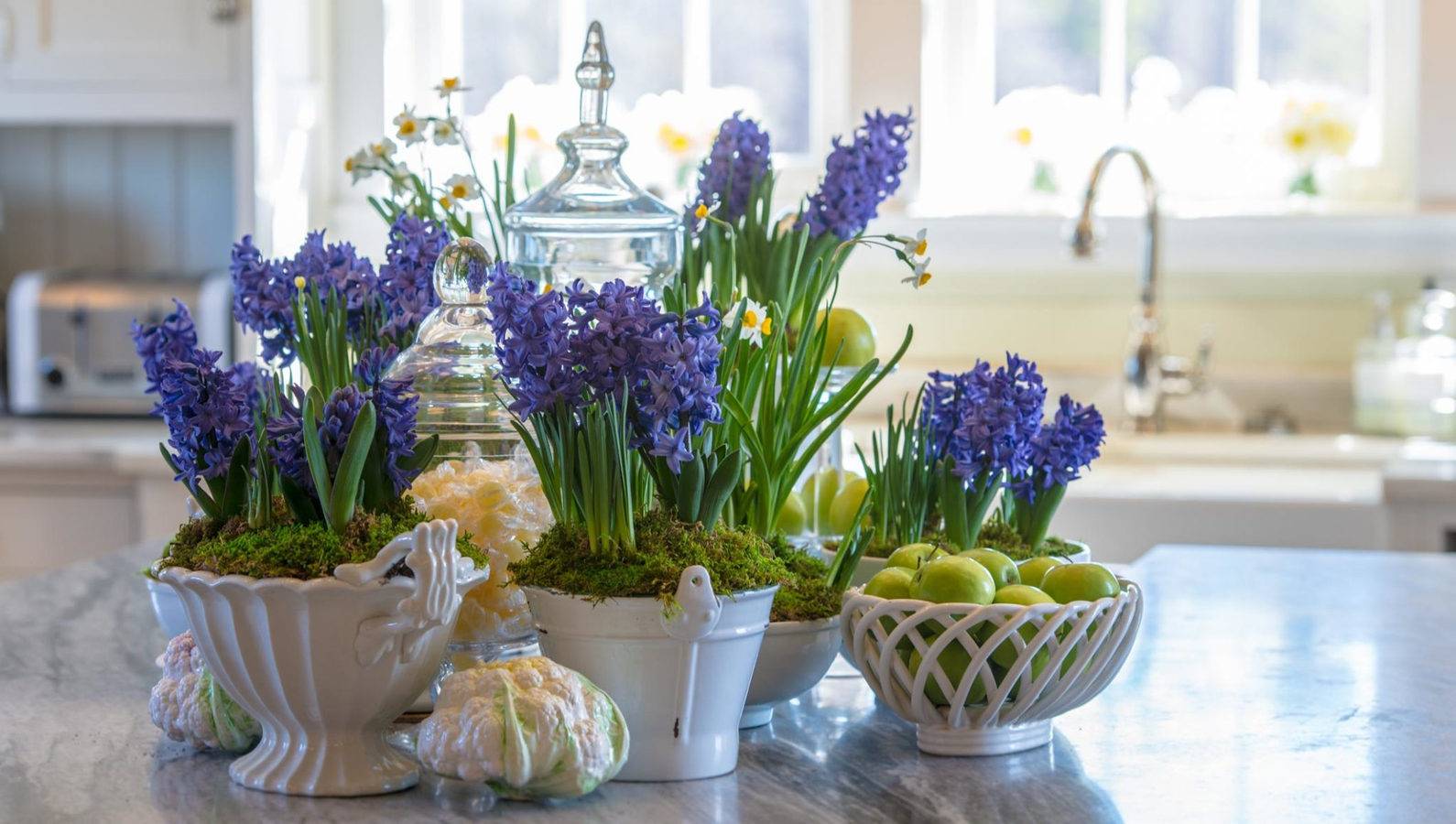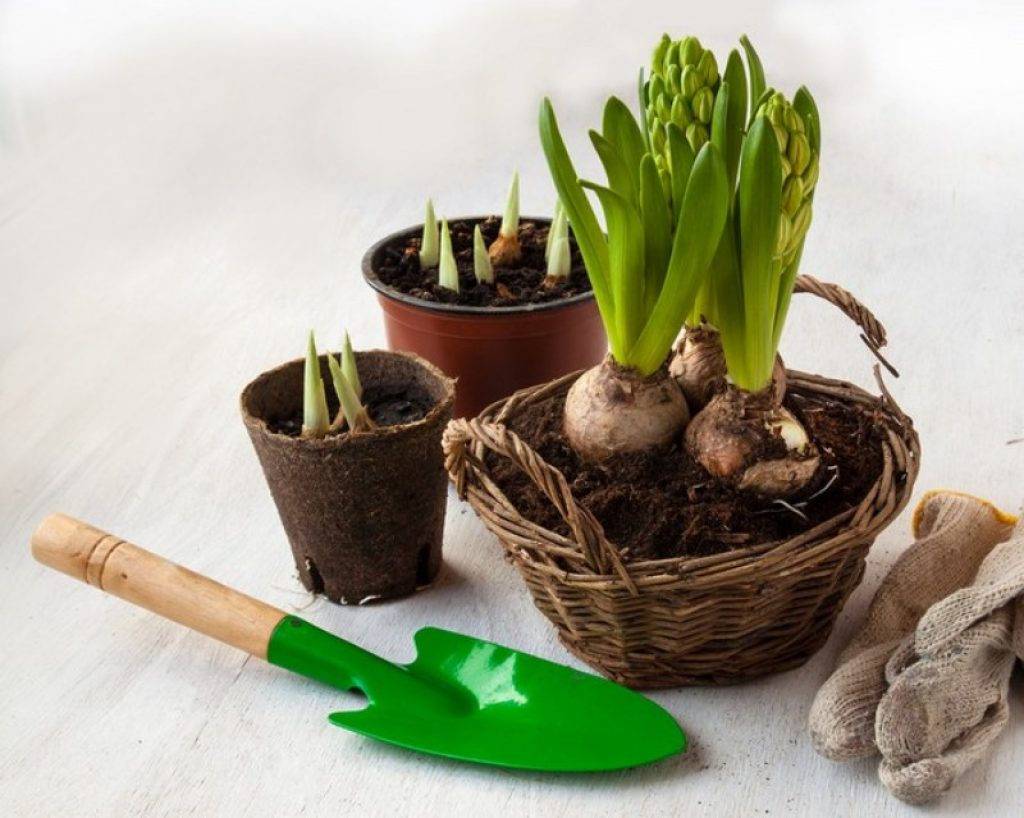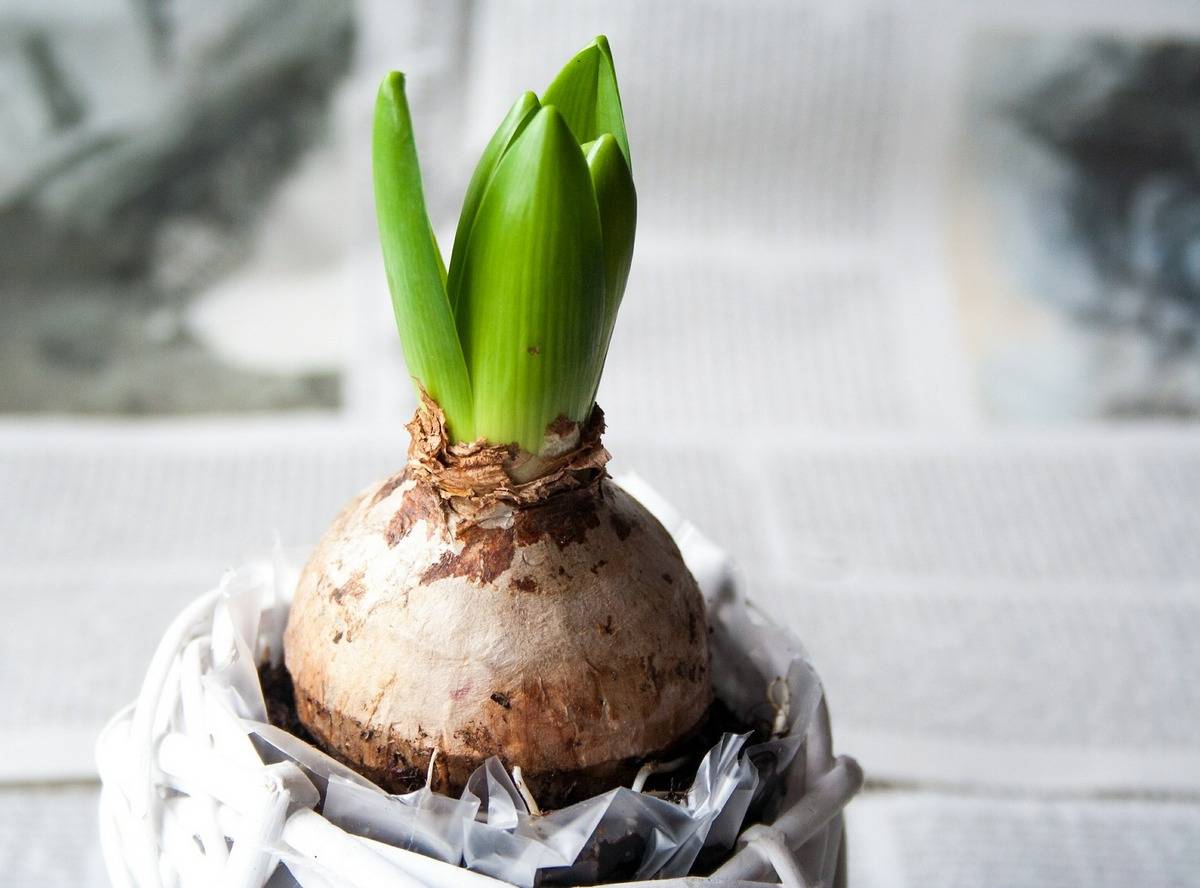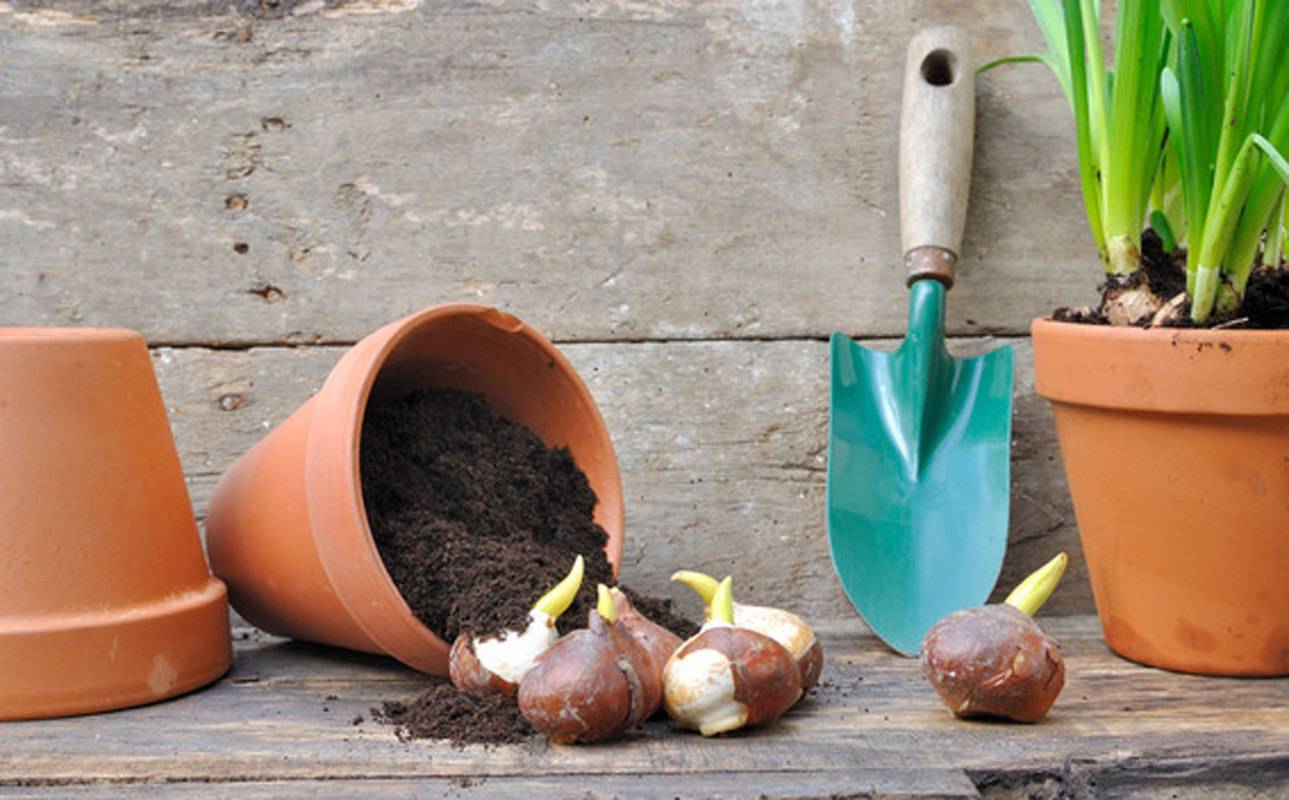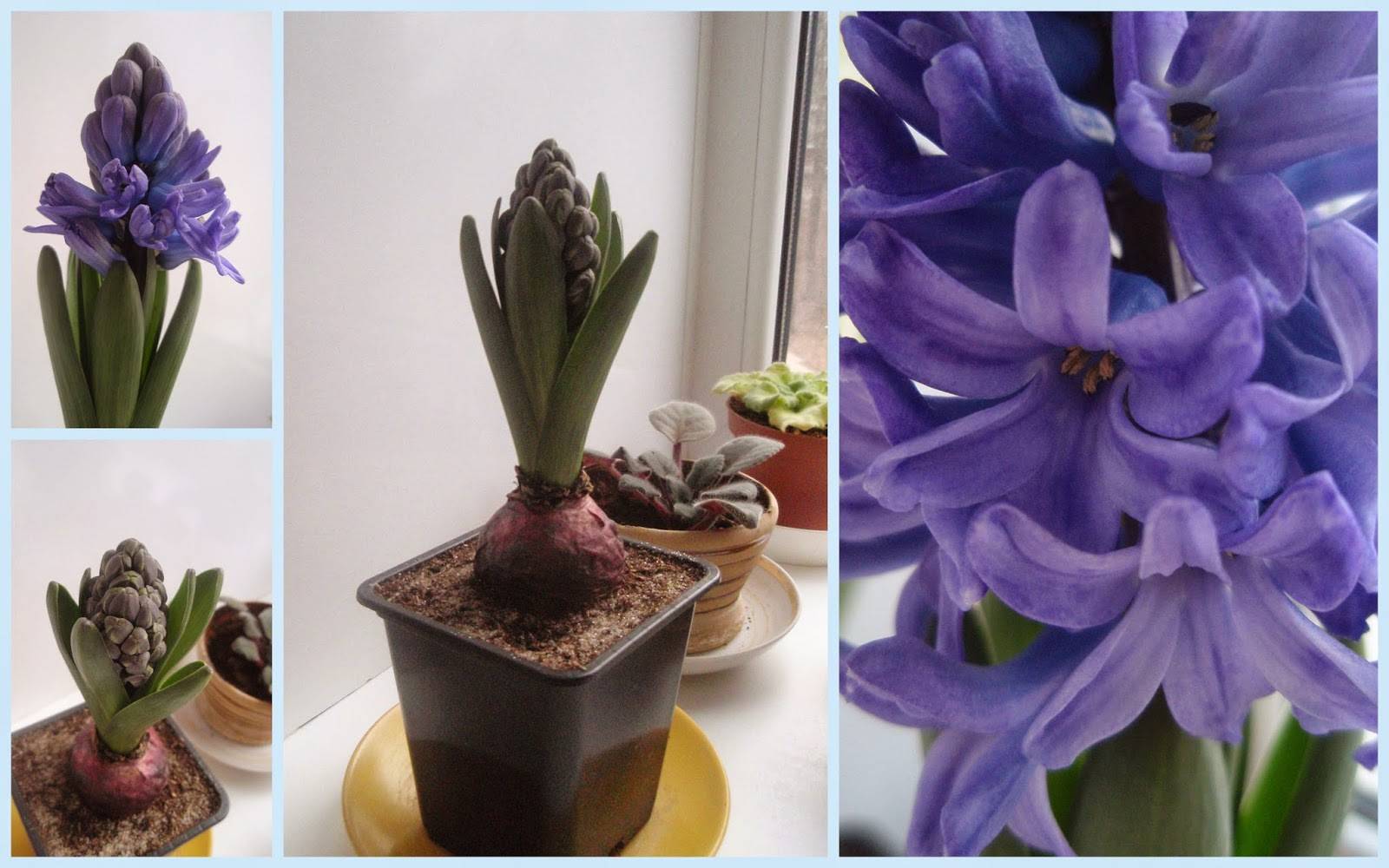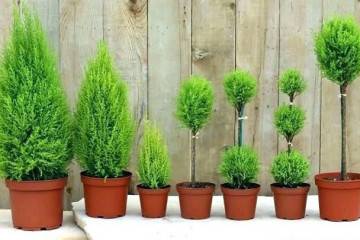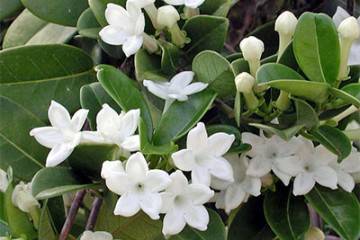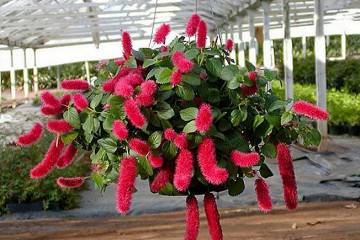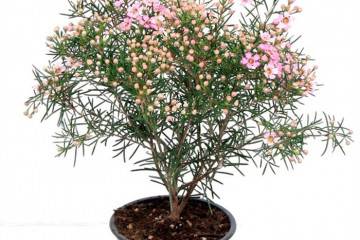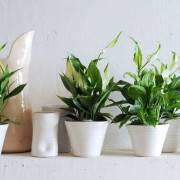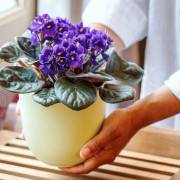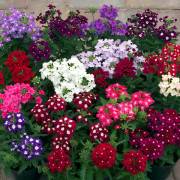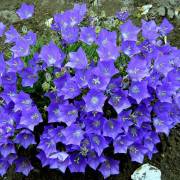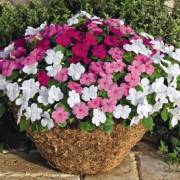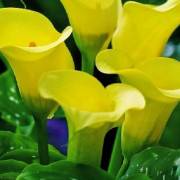Potted hyacinth: home care
Content:
Hyacinth is a bulbous plant belonging to the Asparagus family. It smells good and blooms beautifully. Amateur flower growers are sure that the hyacinth in a pot will delight them with beautiful flowers throughout the year. However, in order to achieve this effect, it is necessary to create optimal living conditions for the plant. Florists note that only one type of it is suitable for breeding at home, namely, oriental hyacinth.
How long does hyacinth live in a pot
The birthplace of the "Apollo flower", as hyacinth is called in another way, is considered to be Central and Asia Minor, China, southeastern parts of Europe, as well as the eastern Mediterranean. When breeding a plant, it is worth remembering that it usually reaches a height of 35-45 cm.
In greenhouses, the flower blooms in the spring. At home, hyacinth is only suitable for one-time distillation. In order for the bulbs to bloom further, the plant must be transplanted into open ground.
Reproduction methods
Independent reproduction of hyacinths is a long process, possible only in a greenhouse or garden, open spaces.
Common ways to propagate flowers at home are:
- incision or cutting out the bottom (reproduction by children);
- propagation by leaves.
In the first case, small funnels are cut in the bulbs, after which they are placed in the box with the holes down and covered with a bag. It is important that the bottom of the flowerpot or other container is covered with perlite in advance. After 2-3 months, on average, with this method of breeding, new bulbs appear.
In the second case, two leaves are cut off from a flowering plant. They must be divided into several parts, the length of which will be at least 5-6 cm. After that, they are treated with a solution of heteroauxin, planted in a container with sand. Planting depth is no more than 3 cm. Next, the container is covered with a bag and placed in a cool shaded place. The roots and leaves with the described reproduction of hyacinths at home appear after a couple of months.
Professional flower growers use another method of plant propagation - seeds. It is very expensive and complex. Since it is not so easy to grow hyacinth from seeds, this method is not recommended for propagating flowers at home.
How to choose and prepare bulbs for planting
Choose the right bulbs before growing them. They should be:
- dense;
- large (at least 5 cm);
- healthy;
- not rotten;
- whole.
When choosing the bulbs, the color of their cover scales will indicate what the flowers will be like.So, the cultivation of grayish-cream indicates the appearance of yellow inflorescences, burgundy - red, light gray - white, lilac - pink, violet - blue, violet and blue.
Self-preparation of hyacinth bulbs for planting is carried out in several stages:
- Digging out the base from the soil for ripening.
- Drying the bulbs at a temperature of 25-30 ° C for two weeks.
- Decrease in temperature to 22-25 ° C in two weeks.
- Store the bulbs in a cool place at 17 ° C until forcing.
When choosing a pot, it should be borne in mind that it should be medium in size. It is desirable that it be equipped with drainage holes at the bottom. It is better to purchase soil for the plant in flower shops.
Forcing at home: step by step instructions
Forcing at home is possible only with strict adherence to the recommendations given by almost all growers. If you break the established rules, at least one of them, the whole process will go down the drain, and the plant will simply die. Even the wrongly chosen planting material can deprive a novice grower of the hope of growing a beautiful flower.
Landing dates
When forcing, it is necessary to properly organize two periods for the plant - "winter" and "spring", and it should be borne in mind that they will not coincide with the calendar season.
When planting hyacinths, it is worth remembering that at least 14-15 weeks must pass before flowering begins. For this reason, if the desired flower should appear by March 8, it is planted in October, while the soil for New Year's beauty is prepared already at the beginning of September.
The depth of laying the bulbs
It is also important to consider the depth of the bulbs. Their planting takes place in several stages:
- Arrangement of drainage in a flowerpot, a wooden box 3 cm high, filling it with soil mixture, and then fine-grained sand.
- The location of the bulbs with their bottoms down at a distance of 3 cm from each other, pressing them into the ground.
- Pouring the substrate, tamping it in such a way that the bulbs protrude 1.5 cm from under it.
- Moderate watering.
- Packaging containers in polyethylene, transferring the container to a cool dark place or an area for storing vegetables in the refrigerator for a period of 6-10 weeks.
From time to time it is necessary to take out the planted bulbs, sprinkle them with a small amount of water. When the sprouts reach a height of 3 cm, they are moved to partial shade. As it grows, the plant is placed in the light at a temperature of 10-15 ° C.
All the intricacies of hyacinth care at home
For a beautiful flowering of hyacinths in pots, home care must be provided to them in full. If you follow the recommendations for growing, over time, flower stalks appear on the flowers, and then buds are formed.
Watering and spraying
When starting to care for a flower, do not forget that it is called the "rain child". That is why the soil should always be moderately moist. During watering, liquid pours over the edges of the pot.
It is worth monitoring whether water collects in the pan of the flowerpot after watering. If it is present, it is necessary to drain the excess. Otherwise, the bulbs will start to rot. The frequency of watering is determined by the grower, who must ensure that the soil is not overdried.
Top dressing for lush flowering
The most common flower feeding during the flowering period is a 0.2% solution of calcium nitrate. It helps to maintain the beauty of the buds for a long time. Liquid fertilizers are applied to wet soil. They must be diluted according to the instructions on the package.
Peduncle pruning
Once the hyacinth has faded, the arrow is cut off. It should be borne in mind that cutting should be done before the seed pods are formed. Otherwise, the flower stalks will take nutrients from the bulbs, thereby contributing to their death.
Temperature regime
The optimum temperature for hyacinth is 22-24 ° C. Plants do not flower or develop in the heat, and therefore it is important to keep them away from batteries that emit hot dry air.
Lighting and supplementary lighting
With a short daylight hours, the flower needs additional lighting. For this, a fluorescent lamp is used. You shouldn't place the plant under the scorching rays, but it will definitely like a good level of light.
Care during the formation of buds
When forming buds, the flower needs some care. It consists in:
- removing faded buds without damaging neighboring ones;
- the addition of liquid mineral fertilizers intended for bulbous plants.
Features of care during the rest period
The dormant period of the flower requires proper care. Only adherence to a certain algorithm of actions will contribute to the ability to use the same bulbs several times to grow a beautiful flower. It consists in:
- cutting off peduncles;
- watering and applying top dressing until the leaves wither;
- removing withered leaves;
- digging out the onion, separating the children from it;
- drying the bulbs for 5-6 days, harvesting them in a cool, shaded place until the next forcing.
In order for the plants to bloom beautifully in the future, it is worth figuring out how to transplant hyacinths. You need to give them time to get used to their new home. Flowers should be exposed to light for at least 15 hours a day. After 10 days, if these conditions are met, they can be transplanted. In a new pot, the hyacinth is placed in a cool place and watered only through the tray.
How to care in winter
Having learned how hyacinth reproduces, it is worth paying attention that in winter it does not require special care in apartment conditions. It is enough to prepare in advance for the coming frosts, namely, to cover the rhizome of the plant with a thick layer of at least 25 cm with rotted sawdust, dried leaves, straw, needles.
When snow falls, it is used as additional protection. After it has melted, it is worth opening the roots of the plant gradually. Care must be taken to prevent fragile growths from being hit. They usually appear after the last layer of snow has melted.
Common growing problems
The most common question is why hyacinths do not bloom. This problem occurs due to improper storage and handling of planting material. In addition, it is important to plant the bulbs on time, both in pots and in open ground, as this can also lead to their death.
What diseases and pests are dangerous for a flower
Among the diseases dangerous for hyacinths of any varieties, there are:
- yellow bacterial rot. Causes liquefaction of the bulbs, which stops the growth of the plant. Sign - gray spots on the leaves;
- parasitic apical rot. It occurs due to microorganisms that live in contaminated soil. Sign - destruction of leaves, decay of roots;
- mosaic. It is characterized by the appearance of elongated light green spots. The disease leads to the death of the plant;
- gray rot. It is characterized by the appearance of yellow spots, increasing in size, then acquiring a brown tint.
The most common pests parasitizing hyacinths are aphids, spider mites, nematodes, bears, flower flies. Their detrimental effect on the plant is its depletion, the appearance of yellow leaves, and root decay. It is important to treat flowers with insecticides in time to prevent their death.
Care errors and their elimination
Errors in care also lead to the death of the plant. The table shows the main ones, as well as ways to eliminate them.
| Problem | How to fix |
| Yellowed leaves | Normalize watering, take care of the absence of drafts in the room where the plant is located. |
| Elongated limp leaves | Normalize light levels and exposure time. |
| Lack of flowering process | Take into account last year's forcing mistakes, select only high-quality material for it. |
| Rotting flowers | Normalize watering, equip a normal drainage layer. |
| Rapid fall of buds | Normalization of watering, control so that water does not fall on the buds. |
| Falling out of the bulb of a flower arrow | Correction of the water regime. |
Hyacinth is a beautiful, vibrant plant. It will quickly relieve depression, take care of creating a good mood. Florists recommend planting saturated color hyacinths for people who do not differ in increased activity. Breeding plants with delicate, light shades of buds, you should be prepared for the end of troubles in the family. In addition, a pleasant smell can relieve fatigue and charge you with positive energy. Choosing hyacinths as a gift is the best solution. Such a present will definitely appeal to loved ones.
